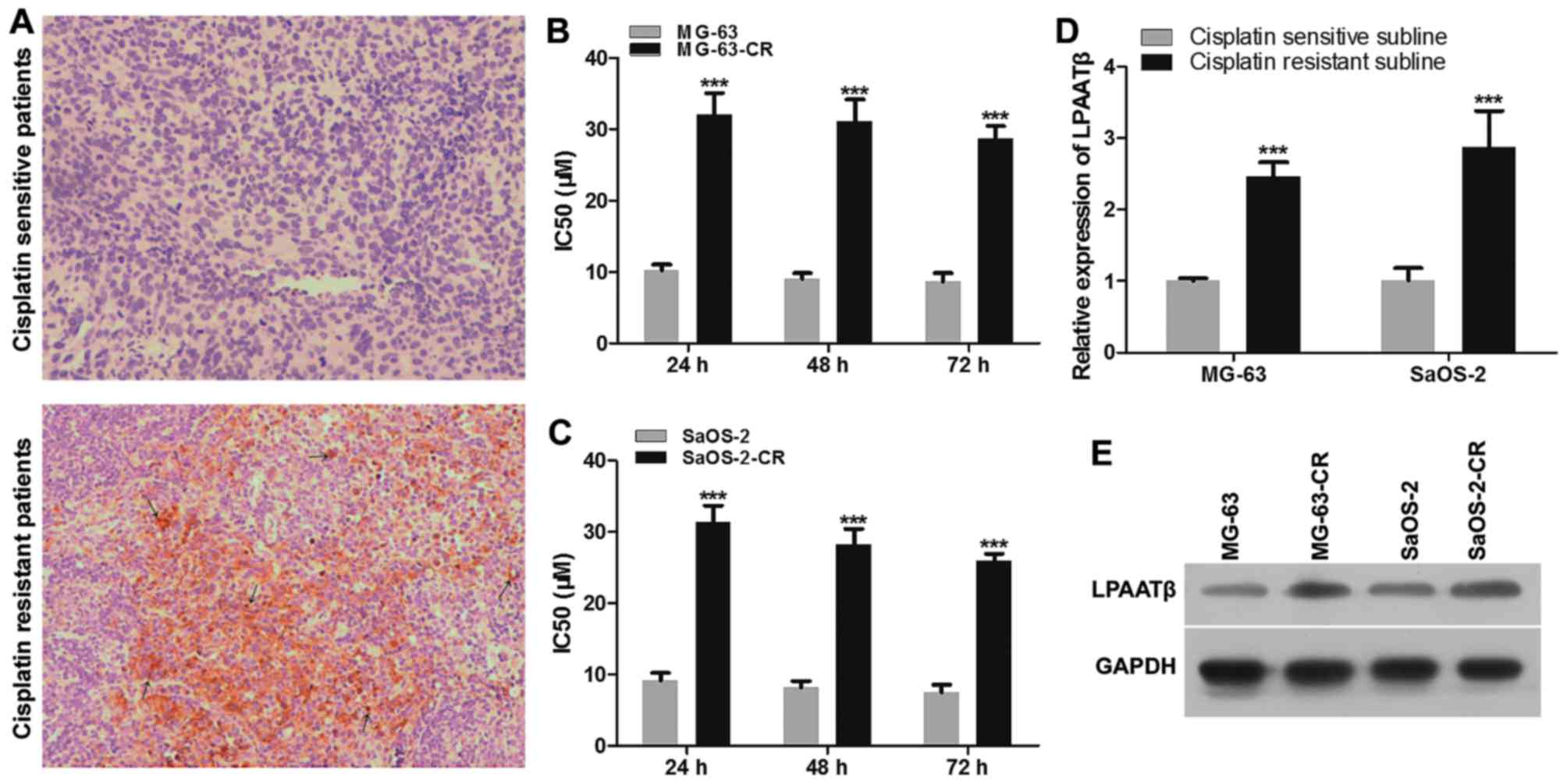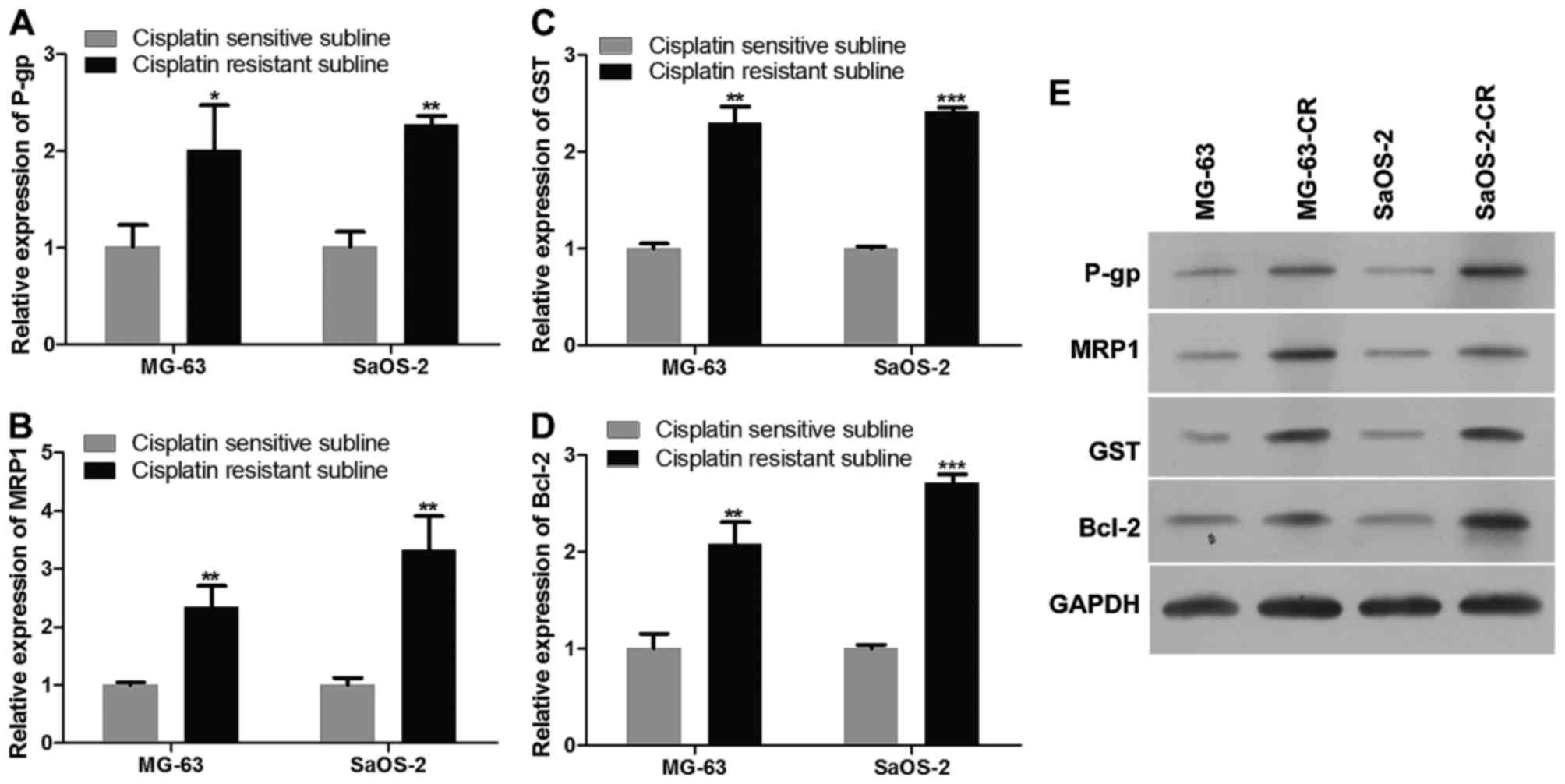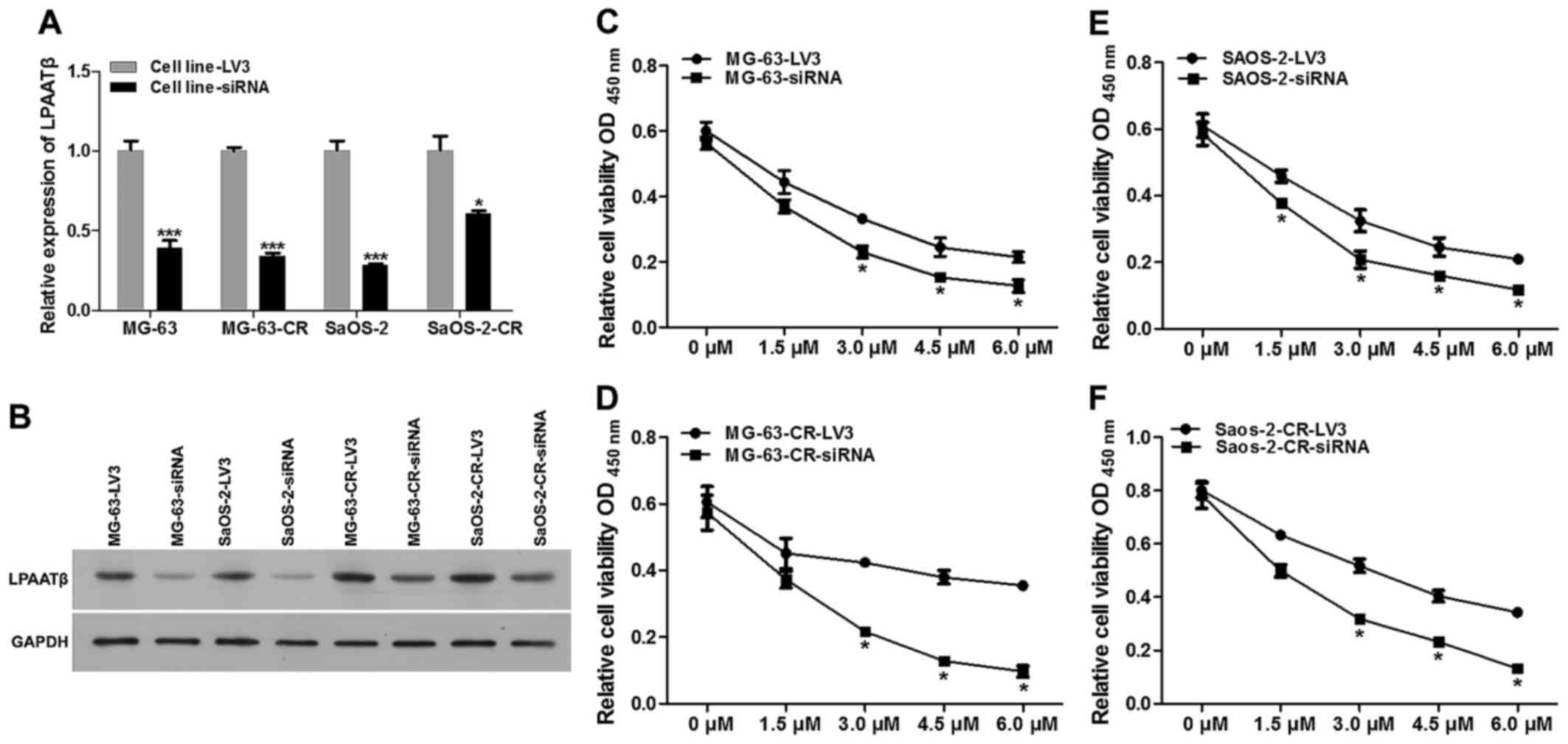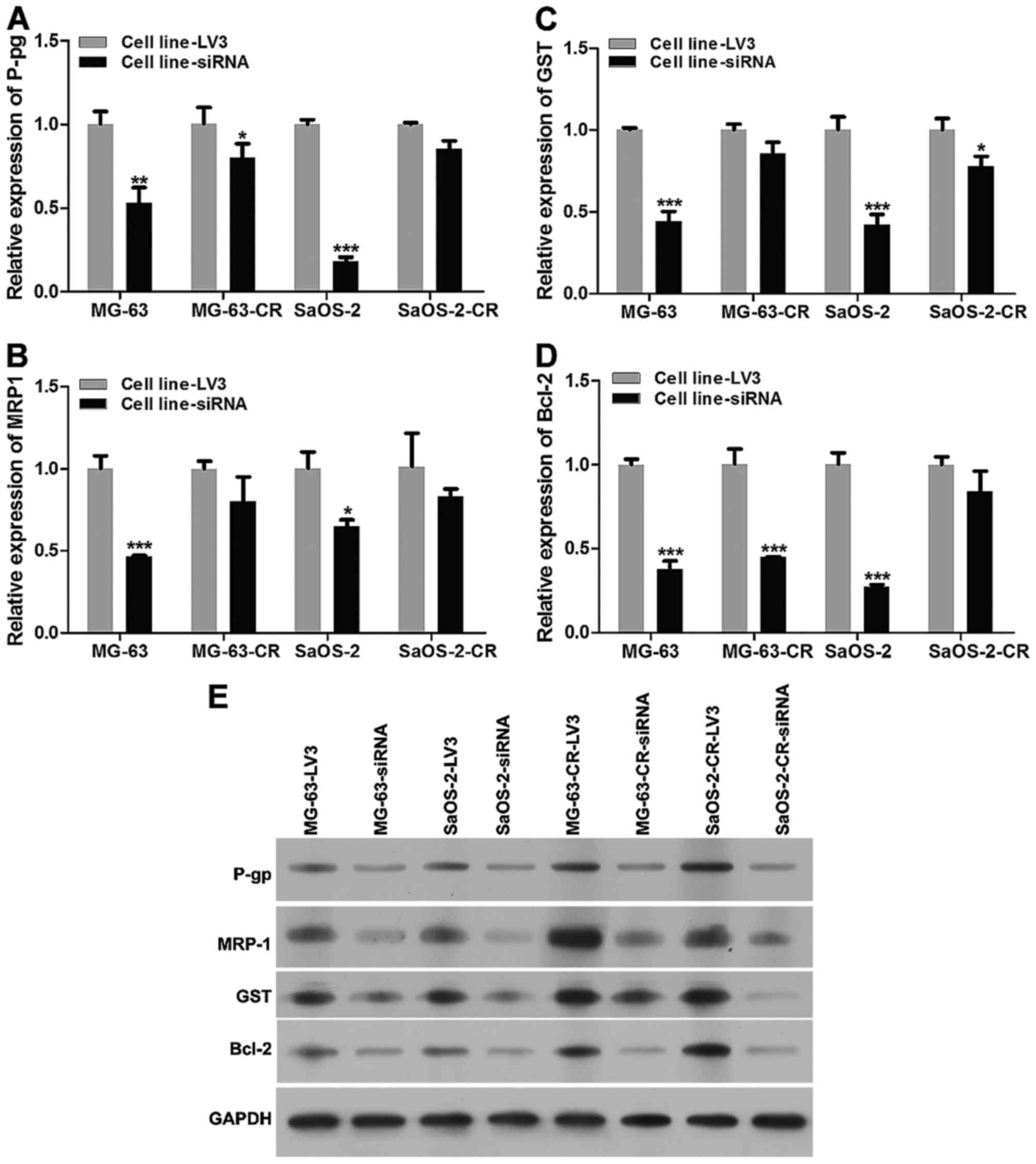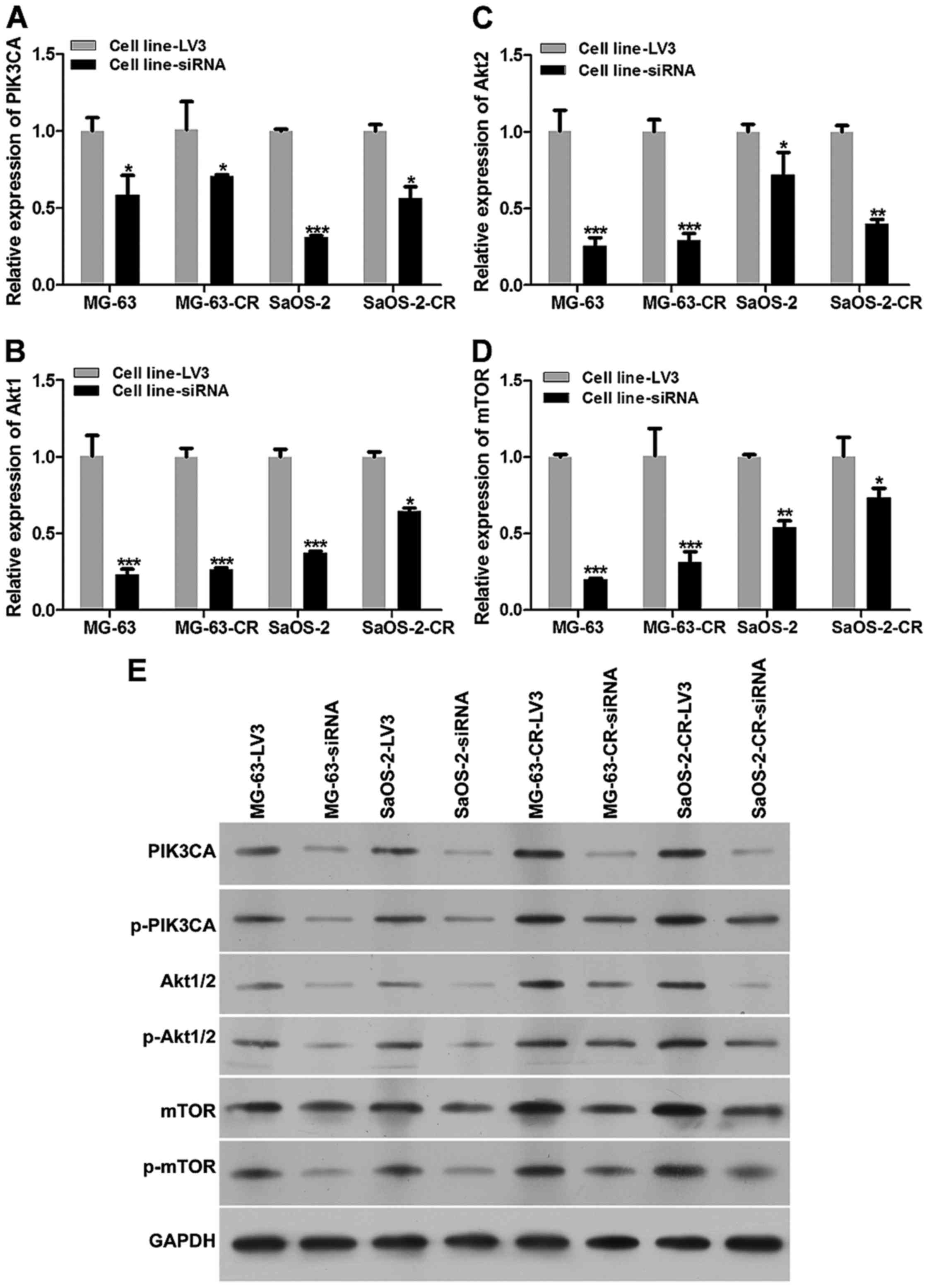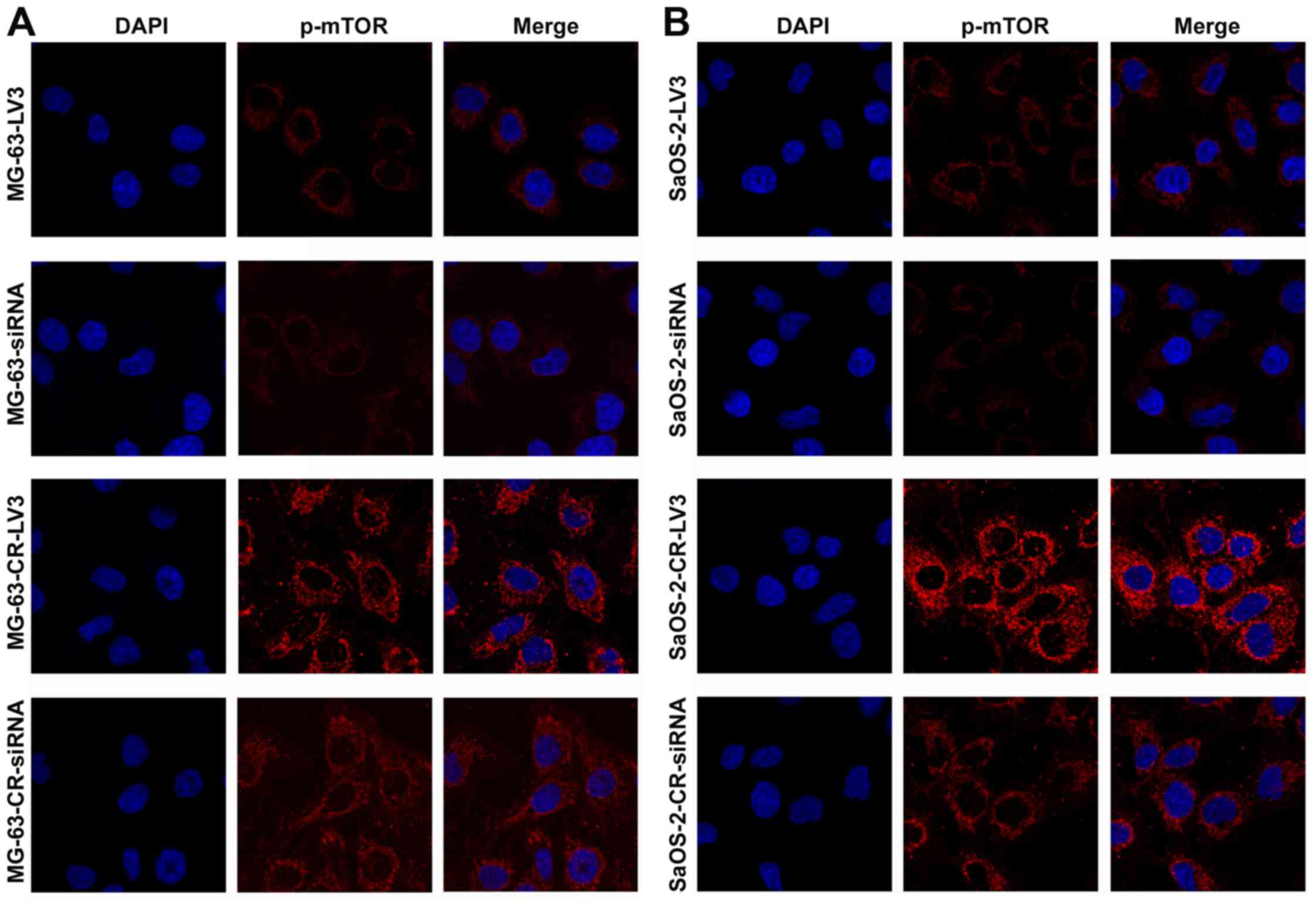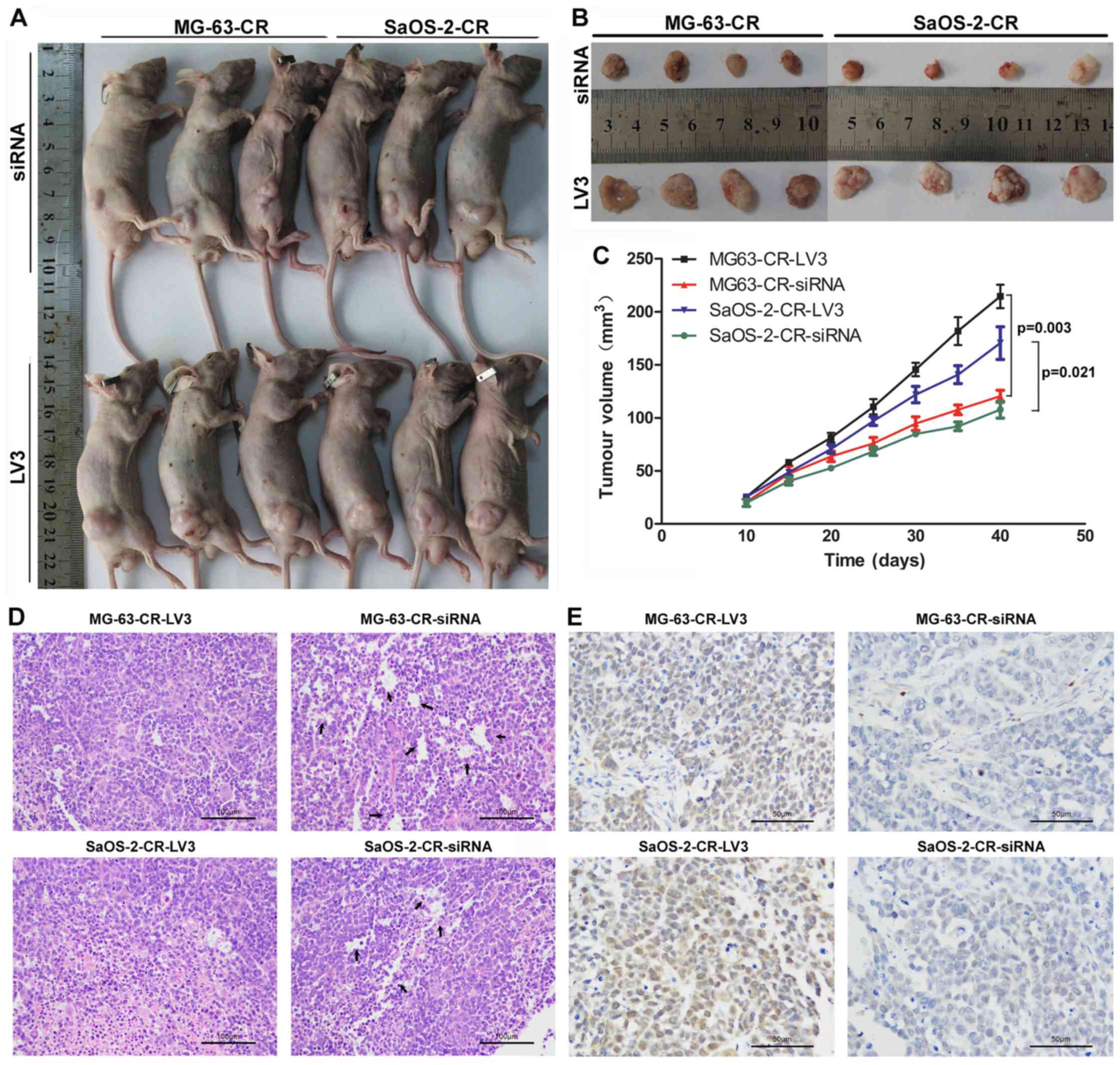|
1
|
Alcantara MB, Nemazannikova N, Elahy M and
Dass CR: Pigment epithelium-derived factor upregulates collagen I
and downregulates matrix metalloproteinase 2 in osteosarcoma cells,
and colocalises to collagen I and heat shock protein 47 in fetal
and adult bone. J Pharm Pharmacol. 66:1586–1592. 2014. View Article : Google Scholar : PubMed/NCBI
|
|
2
|
Fortunati D, Reppe S, Fjeldheim AK,
Nielsen M, Gautvik VT and Gautvik KM: Periostin is a collagen
associated bone matrix protein regulated by parathyroid hormone.
Matrix Biol. 29:594–601. 2010. View Article : Google Scholar : PubMed/NCBI
|
|
3
|
Ferrari D, Codecà C, Battisti N, Broggio
F, Crepaldi F, Violati M, Bertuzzi C, Dottorini L, Caldiera S,
Luciani A, et al: Multimodality treatment of osteosarcoma of the
jaw: A single institution experience. Med Oncol. 31:1712014.
View Article : Google Scholar : PubMed/NCBI
|
|
4
|
Yu W, Tang L, Lin F, Li D, Wang J, Yang Y
and Shen Z: Stereotactic radiosurgery, a potential alternative
treatment for pulmonary metastases from osteosarcoma. Int J Oncol.
44:1091–1098. 2014.PubMed/NCBI
|
|
5
|
Li Z, Zhao L and Wang Q: Overexpression of
long non-coding RNA HOTTIP increases chemoresistance of
osteosarcoma cell by activating the Wnt/β-catenin pathway. Am J
Transl Res. 8:2385–2393. 2016.PubMed/NCBI
|
|
6
|
Yu L, Fan Z, Fang S, Yang J, Gao T, Simões
BM, Eyre R, Guo W and Clarke RB: Cisplatin selects for stem-like
cells in osteosarcoma by activating Notch signaling. Oncotarget.
7:33055–33068. 2016.PubMed/NCBI
|
|
7
|
Dell'Amore A, Asadi N, Caroli G, Dolci G,
Bini A and Stella F: Recurrent primary cardiac osteosarcoma: A case
report and literature review. Gen Thorac Cardiovasc Surg.
62:175–180. 2014. View Article : Google Scholar
|
|
8
|
Hawkins DS and Arndt CA: Pattern of
disease recurrence and prognostic factors in patients with
osteosarcoma treated with contemporary chemotherapy. Cancer.
98:2447–2456. 2003. View Article : Google Scholar : PubMed/NCBI
|
|
9
|
Pagel JM, Laugen C, Bonham L, Hackman RC,
Hockenbery DM, Bhatt R, Hollenback D, Carew H, Singer JW and Press
OW: Induction of apoptosis using inhibitors of lysophosphatidic
acid acyltransferase-beta and anti-CD20 monoclonal antibodies for
treatment of human non-Hodgkin's lymphomas. Clin Cancer Res.
11:4857–4866. 2005. View Article : Google Scholar : PubMed/NCBI
|
|
10
|
Bonham L, Leung DW, White T, Hollenback D,
Klein P, Tulinsky J, Coon M, de Vries P and Singer JW:
Lysophosphatidic acid acyltransferase-beta: A novel target for
induction of tumour cell apoptosis. Expert Opin Ther Targets.
7:643–661. 2003. View Article : Google Scholar : PubMed/NCBI
|
|
11
|
Schmid B, Finnen MJ, Harwood JL and
Jackson SK: Acylation of lysophosphatidylcholine plays a key role
in the response of monocytes to lipopolysaccharide. Eur J Biochem.
270:2782–2788. 2003. View Article : Google Scholar : PubMed/NCBI
|
|
12
|
Blaskovich MA, Yendluri V, Lawrence HR,
Lawrence NJ, Sebti SM and Springett GM: Lysophosphatidic acid
acyltransferase beta regulates mTOR signaling. PLoS One.
8:e786322013. View Article : Google Scholar : PubMed/NCBI
|
|
13
|
Douvas MG, Hogan KN, Ji Y, Hollenback D,
Bonham L, Singer JW and Mitchell BS: Effect of lysophosphatidic
acid acyltransferase-beta inhibition in acute leukemia. Leuk Res.
30:1027–1036. 2006. View Article : Google Scholar : PubMed/NCBI
|
|
14
|
Song L, Yang J, Duan P, Xu J, Luo X, Luo
F, Zhang Z, Hou T, Liu B and Zhou Q: MicroRNA-24 inhibits
osteosarcoma cell proliferation both in vitro and in vivo by
targeting LPAATβ. Arch Biochem Biophys. 535:128–135. 2013.
View Article : Google Scholar : PubMed/NCBI
|
|
15
|
Rastegar F, Gao JL, Shenaq D, Luo Q, Shi
Q, Kim SH, Jiang W, Wagner ER, Huang E, Gao Y, et al:
Lysophosphatidic acid acyltransferase β (LPAATβ) promotes the tumor
growth of human osteosarcoma. PLoS One. 5:e141822010. View Article : Google Scholar
|
|
16
|
Huang Z, Huang Y, He H and Ni J:
Podocalyxin promotes cisplatin chemoresistance in osteosarcoma
cells through phosphatidylinositide 3-kinase signaling. Mol Med
Rep. 12:3916–3922. 2015.PubMed/NCBI
|
|
17
|
Ma Y, Ren Y, Han EQ, Li H, Chen D, Jacobs
JJ, Gitelis S, O'Keefe RJ, Konttinen YT, Yin G, et al: Inhibition
of the Wnt-β-catenin and Notch signaling pathways sensitizes
osteosarcoma cells to chemotherapy. Biochem Biophys Res Commun.
431:274–279. 2013. View Article : Google Scholar : PubMed/NCBI
|
|
18
|
Körbes AP, Kulcheski FR, Margis R,
Margis-Pinheiro M and Turchetto-Zolet AC: Molecular evolution of
the lysophosphatidic acid acyltransferase (LPAAT) gene family. Mol
Phylogenet Evol. 96:55–69. 2016. View Article : Google Scholar : PubMed/NCBI
|
|
19
|
Coon M, Ball A, Pound J, Ap S, Hollenback
D, White T, Tulinsky J, Bonham L, Morrison DK, Finney R, et al:
Inhibition of lysophosphatidic acid acyltransferase beta disrupts
proliferative and survival signals in normal cells and induces
apoptosis of tumor cells. Mol Cancer Ther. 2:1067–1078.
2003.PubMed/NCBI
|
|
20
|
Ma Q, Chang Z, Wang W and Wang B:
Rapamycin-mediated mTOR inhibition reverses drug resistance to
adriamycin in colon cancer cells. Hepatogastroenterology.
62:880–886. 2015.
|
|
21
|
Marklein D, Graab U, Naumann I, Yan T,
Ridzewski R, Nitzki F, Rosenberger A, Dittmann K, Wienands J,
Wojnowski L, et al: PI3K inhibition enhances doxorubicin-induced
apoptosis in sarcoma cells. PLoS One. 7:e528982012. View Article : Google Scholar
|
|
22
|
Randle RA, Raguz S, Higgins CF and Yagüe
E: Role of the highly structured 5′-end region of MDR1 mRNA in
P-glycoprotein expression. Biochem J. 406:445–455. 2007. View Article : Google Scholar : PubMed/NCBI
|
|
23
|
Wang SF, Chou YC, Mazumder N, Kao FJ, Nagy
LD, Guengerich FP, Huang C, Lee HC, Lai PS and Ueng YF:
7-Ketocholesterol induces P-glycoprotein through PI3K/mTOR
signaling in hepatoma cells. Biochem Pharmacol. 86:548–560. 2013.
View Article : Google Scholar : PubMed/NCBI
|
|
24
|
Markova B, Albers C, Breitenbuecher F,
Melo JV, Brümmendorf TH, Heidel F, Lipka D, Duyster J, Huber C and
Fischer T: Novel pathway in Bcr-Abl signal transduction involves
Akt-independent, PLC-gamma1-driven activation of mTOR/p70S6-kinase
pathway. Oncogene. 29:739–751. 2010. View Article : Google Scholar
|
|
25
|
Tsai JL, Lee YM, Pan CY and Lee AY: The
novel VEGF121-VEGF165 fusion attenuates angiogenesis and drug
resistance via targeting VEGFR2-HIF-1α-VEGF165/Lon signaling
through PI3K-AKT-mTOR pathway. Curr Cancer Drug Targets.
16:275–286. 2016. View Article : Google Scholar
|
|
26
|
Zhao Z, Wang J, Tang J, Liu X, Zhong Q,
Wang F, Hu W, Yuan Z, Nie C and Wei Y: JNK-and Akt-mediated Puma
expression in the apoptosis of cisplatin-resistant ovarian cancer
cells. Biochem J. 444:291–301. 2012. View Article : Google Scholar : PubMed/NCBI
|
|
27
|
Fraser M, Leung BM, Yan X, Dan HC, Cheng
JQ and Tsang BK: p53 is a determinant of X-linked inhibitor of
apoptosis protein/Akt-mediated chemoresistance in human ovarian
cancer cells. Cancer Res. 63:7081–7088. 2003.PubMed/NCBI
|
|
28
|
Yuge K, Kikuchi E, Hagiwara M, Yasumizu Y,
Tanaka N, Kosaka T, Miyajima A and Oya M: Nicotine induces tumor
growth and chemoresistance through activation of the PI3K/Akt/mTOR
pathway in bladder cancer. Mol Cancer Ther. 14:2112–2120. 2015.
View Article : Google Scholar : PubMed/NCBI
|
|
29
|
Gan Y, Wang Y, Tan Z, Zhou J, Kitazawa R,
Jiang X, Tang Y and Yang J: TDRG1 regulates chemosensitivity of
seminoma TCam-2 cells to cisplatin via PI3K/Akt/mTOR signaling
pathway and mitochondria-mediated apoptotic pathway. Cancer Biol
Ther. 17:741–750. 2016. View Article : Google Scholar : PubMed/NCBI
|
|
30
|
Cai Y, Tan X, Liu J, Shen Y, Wu D, Ren M,
Huang P and Yu D: Inhibition of PI3K/Akt/mTOR signaling pathway
enhances the sensitivity of the SKOV3/DDP ovarian cancer cell line
to cisplatin in vitro. Chin J Cancer Res. 26:564–572.
2014.PubMed/NCBI
|















